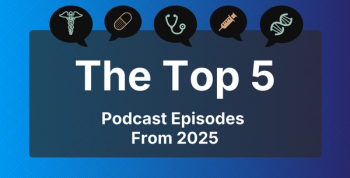
Combination of Dolutegravir, Lamivudine Effective in People Living With HIV
Key Takeaways
- DTG + 3TC regimen shows high efficacy in viral suppression for both ART-naïve and experienced individuals, with low virologic failure rates.
- The meta-analysis included 43 studies, confirming phase 3 trial results and extending efficacy evidence through March 2024.
Real-world analyses have confirmed the efficacy of the 2-drug regimen of dolutegravir and lamivudine in treating HIV, confirming phase 3 testing results.
The efficacy and tolerability of the 2-drug regimen of dolutegravir (DTG) and lamivudine (3TC) in individuals living with
HIV causes immunosuppression because the virus attacks cells that usually fight infections. People living with HIV often have adverse effects of the condition and are more susceptible to other health problems.2 DTG plus 3TC (DTG + 3TC) has been used as an antiretroviral therapy (ART) for people who are treatment naïve. Several phase 3 trials proved the efficacy of the treatment and older meta-analyses have proven its efficacy through 2021. The present review aimed to establish its efficacy through March 2024 through real-world evidence with geographically diverse populations.
Searches of MEDLINE, MEDLINE In-Process, EMBASE, and Cochrane were conducted on November 4, 2022, and March 6, 2024. Studies published between January 2013 and March 2024 were considered for inclusion. Conference materials from 21 regional and international conferences related to HIV and AIDS were also searched between 2016 and 2024 to include any studies using real-world evidence. Only studies with the largest sample size of the cohort were included to avoid overlap. Studies also were included if they reported on at least 1 outcome of interest for DTG + 3TC. ART status at the start of DTG + 3TC, end point, and time point were used to pool the data.
There were 43 studies included in the meta-analysis, and they encompassed persons naïve to ART and participants with previous experience with ART. About 32.6% of those naïve to ART had a viral load of 100,000 or more copies/mL whereas 24.1% had viral loads of 500,000 or more copies/mL. A total of 2.6% of the participants included in a week 48 calculation and 3.4% included in a week 96 calculation who had prior experience with ART had a detectable viral load when switching to DTG + 3TC.
High meta-analysis–estimated proportions were found in individuals naïve to ART who started DTG + 3TC after 48 weeks (0.964; 95% CI, 0.945-0.979) and 98 weeks (0.902; 95% CI, 0.816-0.966). The meta-analysis–estimated proportions were also high in individuals with previous experience with ART after 48 weeks (0.966; 95% CI, 0.950-0.980) and 96 weeks (0.971; 95% CI, 0.946-0.990).
Virologic failures, or 2 consecutive viral load readings of 50 copies/mL or more, were found in some individuals naïve to ART after starting DTG + 3TC, with low meta-analysis–estimated proportions after 48 weeks (0.001; 95% CI, 0.000-0.013) and 96 weeks (0.001; 95% CI, 0.000-0.008). The meta-analysis–estimated proportions of those experiencing virologic failures in individuals with prior experience with ART were 0.009 (95% CI, 0.005-0.015) at 48 weeks and 0.015 (95% CI, 0.007-0.024) at 96 weeks.
Discontinuation for any reason was estimated at 0.052 (95% CI, 0.019-0.097) and 0.130 (95% CI, 0.084-0.183) after 48 and 96 weeks, respectively, in those naïve to ART. Those who were not naïve to ART had estimated proportions of discontinuation of 0.067 (95% CI, 0.042-0.098) and 0.084 (95% CI, 0.047-0.130) after 48 and 96 weeks.
There were some limitations to this study. Reported data were the only methods of evaluating outcomes, and incidence of treatment-emergent resistance could not be included in the meta-analysis due to test results for genotypic resistance not being available. Also, discontinuations were not separated by those related to treatment and those not related to treatment, and the analysis for publication bias was potentially lacking for sensitivity analyses.
DTG + 3TC is a well-tolerated treatment that is effective in increasing viral suppression with low proportions of people having virologic failure. These results “are consistent with virologic outcomes from [randomized controlled trials], while representing a broader spectrum of demographics, behaviors, and comorbidities.”
References
1. Fraysse J, Priest J, Turner M, et al. Real-world effectiveness and tolerability of dolutegravir and lamivudine 2-drug regimen in people living with HIV: systematic literature review and meta-analysis. Infect Dis Ther. Published online January 18, 2025. doi:10.1007/s40121-024-01103-0
2. HIV and AIDS. World Health Organization. July 22, 2024. Accessed January 20, 2025.
Newsletter
Stay ahead of policy, cost, and value—subscribe to AJMC for expert insights at the intersection of clinical care and health economics.








































